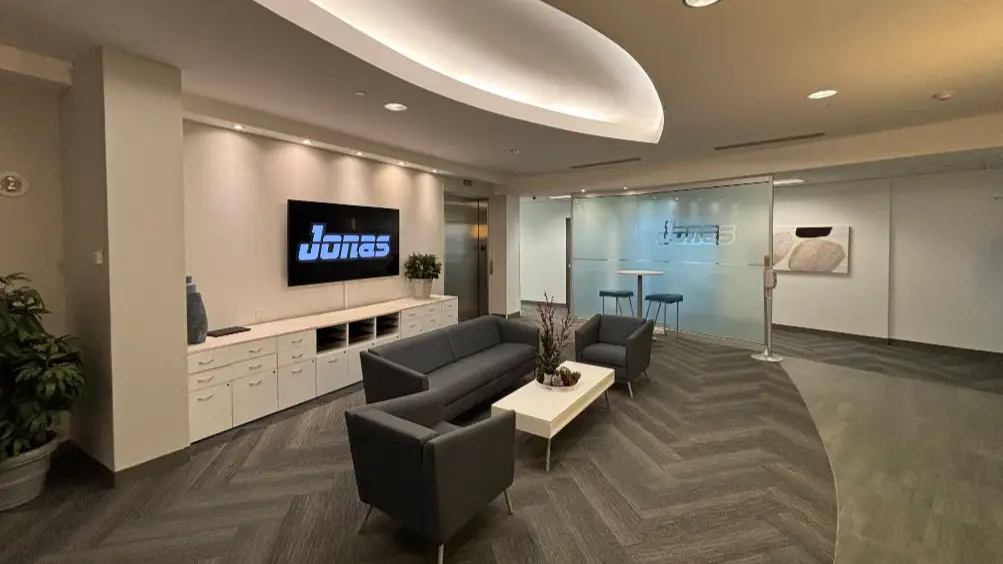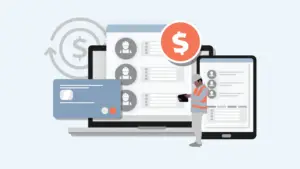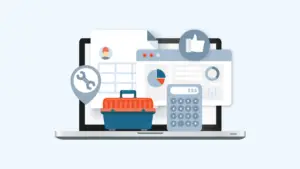Construction projects are a lot like long-distance auto racing. There’s lots of detailed planning before it starts and the risks are high – arguably even higher in auto racing due to the fatal risks for the driver. Therefore, it’s critical for teams in both situations to have complete visibility through the whole process to eliminate or minimize risks.
Races start with a strategy and the crew chief (like a project manager) checks in with the driver throughout the race to ensure their strategy is working and to make any necessary adjustments. Minor adjustments can be made during a pit stop, while major changes need to occur as soon as possible to ensure the car performs to its fullest potential.
This is how successful project management teams approach a construction project. They regularly monitor every phase of the project and make necessary adjustments to ensure the project remains on track and within budget. Any necessary adjustments and risks need to be prioritized appropriately. And this all comes down to effective construction progress tracking.
However, Issues arise when project managers can’t get an accurate view of their operations and costs, and are unable to make effective decisions to mitigate cost overruns and project delays. So how can construction progress tracking be executed to avoid such issues?
In this blog, we’ll discuss why construction progress tracking matters, how to implement it, and the methods and tools that can be adopted for real-time progress tracking.
What is Construction Progress Tracking?
Construction progress tracking involves monitoring and recording the progress of jobs and work orders, ensuring that every aspect of the project is accounted for from start to completion. It should also be organized and readily available for review by stakeholders, including project managers (PMs), subcontractors, and employees.
Construction project tracking consists of a number of tasks, which include documenting daily activities, tracking milestones, and updating the status of various project elements like daily logs, labor hours, equipment management, progress photos, work orders, and change orders, promoting informed decision making and accountability throughout all construction processes.
By having accurate, up-to-date project status and cost data, project managers can identify potential delays, budget overruns, and resource misallocation early on. This allows them to optimize resources and maintain control over timelines and costs, ultimately meeting project deadlines efficiently.
The Importance of Tracking Construction Progress
Tracking construction progress is essential for ensuring project quality and timely delivery. By monitoring job costs and progress in real-time, project managers can utilize more accurate data to identify cost overruns and other issues earlier. They can implement effective strategies to reduce profit fade and ensure the project deliverables are met as promised. Let’s explore how this project visibility improves key aspects of project management:
On-Time Delivery of Tasks
Project tracking helps deliver projects in a manner. With a detailed construction project schedule, PMs can see where the project stands at any moment compared to the project timeline so that they can quickly identify and address any delays, and adjust resources and timelines as needed.
For instance, if a subcontractor does not deliver a task on time, PMs can plan for subsequent delays by rescheduling dependent activities and allocating additional resources if needed to prevent the overall project from derailing
Stay on Budget and Minimize Overruns
Construction projects often operate under fixed price contracts and strict budgets, which makes cost management extremely important. With progress tracking software, it can be easier to understand where the financial redline is and how close the project is to exceeding it.
Construction progress tracking empowers the project team to look at how much of the budget is spent compared to the project’s progress. By monitoring progress towards predetermined outcomes or objectives in a project, the PM can identify if there are too many uncompleted objectives for the remaining budget . Early detection of any discrepancy allows them to implement cost-saving measures to fix areas of overspending and better manage budgets
Avoid Rework and Potential Issues
Rework and mistakes can increase labor costs, waste materials, and hamper productivity, causing delays and pushing projects over budget. Identifying these potential issues early on through effective progress tracking helps prevent such costly setbacks..
For instance, if the project management team carefully watches the project schedule and compares it against the progress, they can avoid work being performed out of order. If any discrepancies arise, the team can stop work, reallocate the resources and subcontractors as needed, and reschedule tasks to prevent extra time and energy spent on rework.
Improved Communication and Collaboration
Progress tracking enhances communication and collaboration by providing timely project updates and centralized documentation for all stakeholders. This ensures that everyone is aligned and informed on various project elements and they can collaborate on challenges and decisions to ensure successful project outcomes.
Project tracking programs typically have task management and assignment functions. Project managers can assign tasks to team members and contractors, set deadlines, and track their progress. With progress tracking, everyone on the project is aware of their responsibilities and can be held accountable.
Better Project Visibility
Construction progress tracking improves project visibility by providing timely and accurate updates on job costs, tasks, and milestones. Keeping all project plans, drawings, and contracts organized and accessible in a centralized location helps stakeholders and staff stay coordinated and up to date.
Enable Informed Decision-Making
Making the right decisions to ensure a project reaches the finish line on time and within budget requires accurate and timely data. Construction project tracking helps decision-makers access the latest updates on job costs and project state to make informed decisions and identify potential issues to proactively prevent them.
How to Track Construction Progress
In the past, tracking projects was largely dependent on site visits, which were vulnerable to oversight and inconsistencies. Today, advanced methods and tools have made the process systemized and more reliable for consistent results. Here are key methods to effectively track project progress:
Daily Logs
Daily logs are a great starting point to understand the work performed each day on a job site. They are usually completed by the superintendent, supervisor, or foreman to capture information like the crew members on site, site and weather conditions, project progress (i.e. tasks carried out, challenges, milestones,etc.)
Visual Tracking Through Photos
Daily log entries can be supported by attaching photos that document key stages, challenges and milestones of the project. Photos allow teams to visualize the work performed and better understand which tasks still need to be performed. Additionally, any updates that need to be documented or site concerns like safety issues can be logged by tagging and annotating photos.
Advanced techniques, such as drone photography, can provide aerial views of the construction site, revealing progress that might not be visible from the ground, which can be especially beneficial for large-scale projects.
Gantt Charts for Visual Project Overview
When it comes to managing projects involving multiple tasks and phases, Gantt charts are helpful for construction progress tracking as they provide a visual overview of all tasks against construction timelines in the form of a bar chart.
By displaying important information like task assignees, the estimated duration of tasks, and any overlapping activities within a project plan, Gantt charts help view critical project information in real-time, improve communication with team members, and streamline project plans, schedules, and resources.
Gantt charts can be created using spreadsheets , with dedicated Gantt chart software, or as part of an integrated construction management software solution.
While Gantt charts are a useful project visualization tool for smaller projects, they can fall short of managing multiple projects with overlapping resources and dependencies. Their linear and two-dimensional format can oversimplify tasks and often makes them less effective in detailing the complexities associated with managing large-scale agile projects involving multiple stakeholders and intricate task dependencies.
Integrated construction management solutions facilitate more comprehensive project monitoring by offering a full suite of project management features, beyond Gantt charts, such as time tracking, daily logs, WIP and cost reporting, and document management, integrated into a unified platform. These solutions help project managers effectively monitor job progress and costs across multiple projects and ensure all stakeholders are up-to-date on the project status.
Utilizing Construction Software
As the industry continues to modernize and adapt technology into the daily workday, utilizing construction software will be key for construction businesses seeking to reduce paperwork and manual tasks when monitoring construction progress and costs.
These solutions can be found as a point solution or as part of an integrated construction software solution. Examples of these software solutions can be found in construction time tracking software, document management software, or construction daily reporting software.
Construction time tracking solutions help construction teams record and approve labor hours, overtime and time off, so that staff can be accurately paid in a timely manner by payroll.
Document management software centralizes all your project-related documents like purchase orders, invoices, equipment information, and pictures digitally for quicker viewing access and better organization of information.
Construction daily log software helps project teams digitally record their daily logs by summarizing information on the job progress, daily events, weather conditions, milestones and challenges.
In an integrated construction management software system, the above-mentioned solutions would ideally all be included in one streamlined solution and include other key project management solutions such as job costing, payroll and construction accounting software, project scheduling, change order management, RFIs,submittals and transmittals.
How Construction Progress Can Be Tracked in Real-Time
Now that we’ve discussed some of the ways construction progress tracking can be completed, let’s learn how progress tracking can be enhanced when it’s done in real-time. Real-time insights provide immediate, more accurate information on work performance, costs, and resources.
When construction progress tracking is not done in real-time, the data reviewed will be ineffective for making informed business decisions. As a result, there may be missed opportunities to promptly identify issues, which could lead to cost overruns, project delays and resource misallocation.
Irrespective of how you choose to track construction jobs, it’s important to recognize that real-time tracking necessitates construction technology, specifically construction software to automate tasks and digitize data to streamline the flow of information. Let discuss some of the tools and processes that should be present in construction software to produce real-time tracking and data.
Field to Back Office Integration
Integrating the field with the back office means creating a seamless flow of data from the job site to back office staff. When the field to back office integration is in real time, information related to the job costs and operations such as labor hours, purchase orders, and change orders are immediately available for approval and processing.
By having a real-time flow of data from the field to the back office, manual data entry, double data entry and errors, enhancing the accuracy as well as the timeliness of data.
Single Entry Point System
Many modern construction companies use multiple communication platforms, which may require manual and double data entry, increasing the chances for errors, inefficiencies and siloed information.
Having a single entry point system means that all project data, updates, documents, and communications only need to be entered once into an integrated construction management software solution.
When all project data can be consolidated and shared through a centralized system, businesses can rely on this single source of truth to verify information or any discrepancies in project communications.
Automated Allocations
Automated allocations means having a workflow in your construction management software that automatically associates cost data entered from the field with the correct project phase and cost type in the software system in real time.
This not only eliminates misallocations, which can lead to cost overruns and delays in the project progress, but it also improves on the data accuracy. With more accurate data readily available for the back office to process, stakeholders can get more true depiction of their costs and operations at any moment.
Project Scheduling Functiontionality
Construction management software with project scheduling functionality helps provide real-time feedback for the project manager and stakeholders on the project progress and activities.
Updates, change orders, supply chain challenges, and other progress-impacting events can be accounted for in the software. This enables the project team to review project timelines and identify if any changes will impact the delivery date and budget, and effectively reallocate resources to minimize cost overruns and project delays.
How to Maximize Value from Real-Time Construction Progress Tracking
Progress tracking is only helpful when you use the information it provides to prevent or minimize any threats to your project, or if it helps you identify other opportunities to improve your project projess.
Once you have accurate data available in your software, you can transform it to provide in-depth analysis and actionable insights to help you make informed decisions, improve project timelines, and ensure better budget management. Here are some of the ways to make the most of your real-time construction progress tracking:
Analyze KPIs with Dashboards
Project dashboards help PMs quickly analyze project progress by displaying key performance indicators, and project milestones in one consolidated view. This view may also include interactive charts, graphs, and tables. Customizable dashboards can help teams filter and adjust their view according to their project concerns.
Manage Cost Overruns with WIP and Cost Reports
WIP (Work-in-Progress) and cost reports offer detailed insights into ongoing project expenses and progress. By tracking project costs against the budget, and monitoring labor, material, equipment, and overhead costs, PMs can promptly identify cost overruns, and variances and take corrective actions to prevent further issues while the job is underway.
Improve Customer Communication with a Client Portal
While it’s important for all team members to have access to project information, customers can benefit from it as well. Customer portals that provide real-time access to project updates, photos, invoices, work orders and service requests can improve client communications, build better trust in your business, and enhance customer satisfaction.
Improve Accuracy and Efficiency on Estimates and Forecasts
Real-time progress tracking is valuable because it helps enable data integrity and accuracy. Capturing accurate data associated with job costs, delays, materials, subcontractors, and timelines helps estimators achieve more accurate estimates for future projects, which enhances business credibility against competitors. It also helps management teams schedule the project and forecast more accurate budgets and timelines, leading to better customer satisfaction when the project wraps.
Track Construction Progress in Real Time with Jonas Construction Software
At Jonas Construction Software, we simplify construction progress tracking by integrating the field and back office operations in real time to help construction and service access real-time, accurate data to make informed decisions from.
Our suite of integrated solutions include automated accounting and payroll, project management, service management, and exceptional cost and WIP reporting.
With our project management solutions backed by construction accounting software, we help businesses better manage their projects by managing their costs more effectively to help improve profitability, while staying within budget and meeting deadlines and expectations of their clients.
If you’re ready to learn more about our project management and integrated solutions and how we can help your business improve profitability and operational efficiency on your jobs, contact us today.







